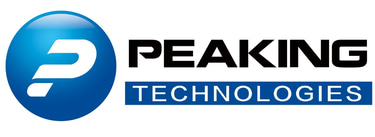Are Tariffs Squeezing Small Electronics Startups? A 2025 Survival Guide
In 2025, small electronics startups in the U.S. are grappling with the profound impacts of tariffs, particularly those targeting Chinese imports. These tariffs have introduced significant challenges, from escalating costs to disrupted supply chains, compelling startups to reassess their strategies and operations.
5/17/20252 min read


In 2025, small electronics startups in the U.S. are grappling with the profound impacts of tariffs, particularly those targeting Chinese imports. These tariffs have introduced significant challenges, from escalating costs to disrupted supply chains, compelling startups to reassess their strategies and operations.
The Tariff Landscape: A Brief Overview
President Trump's 2025 tariff policy introduced a baseline 10% import tariff on most countries, with higher rates on specific goods, including a 25% tariff on auto imports and elevated tariffs on Chinese electronics components. While a temporary 90-day tariff reduction was agreed upon in May, reducing some tariffs from 145% to 30%, uncertainty persists, complicating long-term planning for businesses reliant on international supply chains.
Real-World Impacts on Electronics Startups
1. Escalating Costs and Shrinking Margins
Tariffs have directly increased the cost of imported components essential for electronics manufacturing. For instance, a small U.S.-based electronics manufacturer faced a 25% tariff on Chinese-made components, which constituted 40% of their product cost. This led to a 10% reduction in profit margins and necessitated an 8% price increase, resulting in a 12% drop in sales volume. (Read more details: https://www.tariffscheck.com/how-tariffs-affect-businesses)
2. Supply Chain Disruptions
The imposition of tariffs has disrupted established supply chains, causing delays and increased lead times. Startups operating with lean inventories are particularly vulnerable, as delays in receiving components can stall production and product launches. Additionally, the complexity of customs procedures and the risk of misclassification under the Harmonized Tariff Schedule (HTS) have introduced further challenges.
3. Investor Confidence and Valuation Concerns
The unpredictability introduced by tariffs has made investors cautious. Venture capital firms are scrutinizing startups' exposure to international supply chains and their contingency plans. A lack of preparedness can lead to valuation adjustments or missed investment opportunities, as investors seek to mitigate risks associated with tariff-induced uncertainties.


Strategic Responses: Navigating the Tariff Terrain
1. Diversifying Supply Chains
To mitigate tariff impacts, many startups are exploring the "China+1" strategy, seeking alternative manufacturing hubs in countries like Vietnam, Malaysia, and Mexico. This diversification aims to reduce dependency on any single country and spread risk across multiple regions.
2. Investing in Compliance Infrastructure
Given the complexities of international trade regulations, investing in customs compliance infrastructure is crucial. Engaging customs brokers, utilizing regulatory alert services, and establishing robust internal documentation workflows can help ensure accuracy in import/export processes and avoid costly delays or penalties.
3. Reevaluating Domestic vs. International Production
While shifting production domestically may seem appealing, it's essential to weigh the benefits against potential challenges. Domestic vendors may face capacity constraints and higher production costs. However, aligning with "Made in America" consumer preferences and reducing exposure to geopolitical risks can offer long-term advantages.
Conclusion: Charting a Resilient Path Forward
Tariffs have undeniably introduced significant challenges for small electronics startups, from increased costs to disrupted supply chains and investor apprehension. However, by proactively diversifying supply chains, investing in compliance infrastructure, and strategically evaluating production locations, startups can navigate these turbulent times. Adaptability and strategic planning are paramount in ensuring resilience and continued growth in the face of trade uncertainties.
